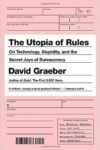
[University of Massachusetts Press; 2020]
At the beginning of Sherrin Frances’ Libraries amid Protest, the author describes the challenges of defining the book’s central concept, what she terms the phenomenon of the “protest library”:
Most of the time people have no idea what I mean when I say I study protest libraries. As I explain, I can see their expression change, first to one of surprise and then to one of nostalgia, and inevitably we slip into a discussion of their experiences in public libraries.
As Frances goes on to state, the idea of the public library looms large in both individual and collective narratives of the transformative power of reading: in “the general public’s collective romantic memory,” the library “serves as a cornerstone of democracy and as a community resource”.
Like the people Frances encounters, I was also struck by a certain nostalgia when reading this book. I often trace my own bibliophilia to regular trips to my local, council-run library in South London when I was a child. In my own, admittedly romanticised, narrative of my education, these trips laid the foundations for the many hours I have spent in public (and university) libraries as an adult and my career as an academic. My nostalgia is furthermore compounded by a broader backdrop, in which the public library system in the UK is largely seen as in decline, suffering from chronic underfunding and closures in the late twentieth and early twenty-first centuries, as well as transformations propelled by new technologies and digitization.
In this book, Frances tells a similar story about the public library system in the United States, moving from its origins in the approximately 2,500 libraries funded by the philanthropist Andrew Carnegie in the late nineteenth and early twentieth centuries, to its increasingly precarious financial position and shift away from physical book collections towards “digital information,” “maker spaces,” and private partnerships”. Yet Frances’ main subject is not the decline of the public library. Instead, she establishes this history not to simply reinforce the romantic idea of the public library as a space of democracy but to chart its intimate relationship to the philanthropy of capitalism. The classist and paternalist origins of the public library system, what she describes as “a certain kind of industrial, capitalist indoctrination meant to infuse people with the knowledge of how to be better citizens and more productive workers” and which in the US is also bound up with a history of racism and segregation, is thus counterposed with Frances’ actual subject, the remarkable appearance of libraries within the wave of protest movements that swept the world over the last decade. Ranging from the Indignados in Spain, to the Occupy movement across North America and Europe, the Gezi Park protests in Turkey and the EuroMaidan in Ukraine, these protest encampments have all included temporary “protest libraries”, which Frances argues challenge the Carnegie library model: “They are the spaces of opportunity and resistance that American public library rhetoric can only promise”.
To tell this fascinating story and understand why activists are engaged in the labor-intensive process of cataloguing and taking care of thousands of books in the midst of political occupations, which in the majority were violently evicted after a short period by state security forces, Frances turns to the theories of direct democracy that have largely been used to understand these movements. As scholars such as David Graeber, Marina Sitrin and Zeynap Tufecki have analyzed, the occupations that emerged from 2011 did not simply protest against austerity, inequality and injustice but enacted a form of prefigurative politics, seeking to put into action another kind of society not in the postponed future but in the here and now. Directly contesting the creeping privatization and enclosure of the public sphere, as well as the exclusionary hierarchies of the political system, the activists created communities, almost mini-cities, that were based on principles of participatory democracy and included free child-care, medical care, spaces for political discussion and, of course, libraries. While Frances’ focus on ideas of prefigurative politics and horizontalism is not new and draws on a now well-established body of largely anarchist theoretical reflections on these political movements, what is original about Libraries amid Protest is her decision to foreground the library not as a distraction from the “real work” of the occupation but as a key component of its politics. This is best expressed by an activist in Chicago’s 2016 Freedom Square occupation, a direct-action protest in response to police violence against people of color, who explains to her: the library is “a structure of the occupation. It’s a symbol of the things we think we should invest in instead of the police”.
In her travels through the histories of the occupations, Frances describes the development of these protest libraries, which began to organically coalesce through donations and grow to collections of thousands of books without much initiative from activists. Indeed, her analysis surprisingly concentrates less on the actual content of the libraries — on only a few occasions does she list authors or describe the political and ideological slant of the collections — than the power of the materiality of the books themselves. As she argues, the collection of large quantities of heavy, physical books was actually less of a detriment to the occupations than an asset: the “inception of a protest library hinges on the power of a stack of books to attract more and more books, placing an increasing emphasis on the material underpinnings of the library”. For Frances, it is the impermanent physicality of the protest library that contains its revolutionary possibility, despite its existence in precarious contexts often threatened by violence and eviction, because it offers a creative, heterotopic space that allowed participants in the protests to slow down and resist capitalism’s demands for endless productivity, thus fulfilling the democratic ideals the public library has failed to live up to.
This focus on the materiality of the protest library in Frances’ argument is not to the exclusion however of the role of social media, the internet, and the digital sphere in fomenting its existence. Much has been written about how movements such as Occupy, the Indignados and the protests of the “Arab Spring” used social media to generate physical occupations, which in turn were connected to other occupations throughout the globe via online networks. In the same way, Frances shows how activist-librarians used Twitter, Facebook, and blogs to construct an online identity for the physical protest library, which in turn inspired and connected with other protest libraries across the world. This networked structure is nicely replicated in the structure of the book itself, which weaves together the more well-known cases such as BiblioSol and the Occupy Wall Street People’s Library with lesser-known examples such as the Biblioteca Popular Víctor Martínez in Oakland. Through a series of short and digestible chapters, Frances explores the evolution of the protest library from what she identifies as the first example, in Spain, through its appearance in the US, Turkey, the Ukraine, and France before circling back to the legacy of Bibliosol in Madrid. It is also clear that Frances’ research drew heavily on these online records and archives to construct the history of each library. As she states, due to its provisional and precarious nature, it was not always possible to visit a protest library before it was dismantled.
This balance between the materiality and virtuality of the protest library furthermore allows Frances to develop what I would argue is one of her most important insights. By foregrounding the emergence of a series of temporary protest libraries, the author begins to interrogate the nature and meaning of what a “library” is. As she notes, in response to the creation of the OWSP Library, and the shocking images of the destruction of books in the violent police raid of Zuccotti Park, not all librarians were sympathetic. In particular, some expressed concern about the designation of the term “library” to the collection of books amassed during the protest and how this could undermine the institution of the free public library itself. Libraries amid Protest tackles this critique in a nuanced fashion by complicating the permanent/impermanent binary that would seem to separate public libraries from protest ones. To do so, she juxtaposes the story of the OWSP Library with that of the controversial “Central Library Plan” for the New York Public Library, which would have resulted in the removal of 3 million books from the main collection. If digitization and the disappearance of resources from public libraries problematize both their permanence and democratic accessibility, she also shows how although the protest library is necessarily defined by its existence within a temporary, heterotopic space, this is not to say that the library ceases to exist when the protest camp ends. Frances traces the afterlife of the physical collections of the different protest libraries, observing how some books moved between different protest camps and others ended up in permanent collections in collectives or squats. Most importantly, though, she argues that the materiality of the protest library constructs both a community and an experience that outlives its physical existence:
protest libraries are just one more temporary stop on the chaotic, nonlinear trajectory of the long-lasting concept of “library”. . .I have also come to realize that these libraries resist definition because they are meant to be used and inhabited rather than written about. Protest libraries are experiential.
This quality and the radical possibility of the protest library is best encapsulated in the book’s analysis of the Biblioteca Popular Victor Martinez in Oakland, in which a group of activists created their own community-led library in the grounds of an abandoned Carnegie library. Its story, with the democratic potential and prefigurative politics of a truly non-hierarchical people’s library, starkly contrasts with the failure of a capitalist library system.
However, while this story, like that of BiblioSol, the OWSP Library and the library Gezi Park, was clearly aligned with an anti-austerity politics that drew upon anarchist ideas, I was less certain about the inclusion of the EuroMaidan protest library in Frances’ overall analysis. As she acknowledges, in contrast to movements such as 15-M’s and Occupy’s emphasis on “community- and world-building”, the EuroMaidan occupation was about competing visions of national identity, closer ties with Russia or integration into the European Union, and the protest included both leftist/anarchist activists, neoliberal capitalists, and nationalists. This non-anarchist bent is reflected in the protest library’s closer alignment with a particular institution, Ukrainian House, and although this provided an interesting counterpoint to the other libraries, I felt that the EuroMaidan protest library’s nation-building project undermined the central thrust of a book rooted in anarchist and prefigurative politics.
This point is also reflected in the fact that despite Frances stating that the protest library “stems from a history of anarchism and direct democracy,” there was very little reference to that history or what an anarchist book or library history looks like prior to the 2011-2016 period covered in the book. As Jessica Moran notes in “To Spread the Revolution: Anarchist Archives and Libraries”, “the written and published word” have been central to the anarchist movement, which has not only extensively published newspapers, pamphlets and journals to spread anarchist ideas but since the late nineteenth century, has sought to preserve its own history through the creation of anarchist libraries and community archives. Reading Libraries amid Protest, I found myself longing to know how the post-2011 protest libraries engaged with or mobilized that history, as well as how they relate to the proliferation of anti-capitalist alternative presses over the last few decades. Magalí Rabasa argues in The Book in Movement: Autonomous Politics and the Lettered City Underground that these autonomous publishing movements, such as the cartonera or cardboard publishers in Latin America, have reinvented the print book as a non-commercial and open object that is reflected not only in the content but also its material production. This history would have complemented Frances’ excellent insights about the material power of the protest library and situated her work in a broader and exciting context in which autonomous, anarchist, and anti-capitalist activists are rethinking the social and political role of libraries, book culture and book publishing. Nevertheless, Libraries amid Protest is a valuable and untold story of inspiring, heterotopic spaces and a phenomenon that is often overlooked in political analyses of the encampments.
Cherilyn Elston is a lecturer in Latin American Cultural Studies at the University of Reading, UK. She is the author of Women’s Writing in Colombia – An Alternative History (Palgrave Macmillan, 2016) and the translator of Jorge Consiglio, Southerly (Charco Press, 2017). She is the managing editor of the online literary translation journal, Palabras Errantes: http://www.palabraserrantes.com/
This post may contain affiliate links.







